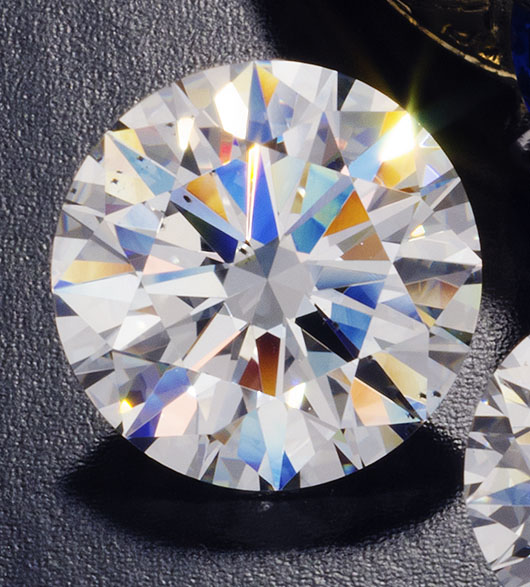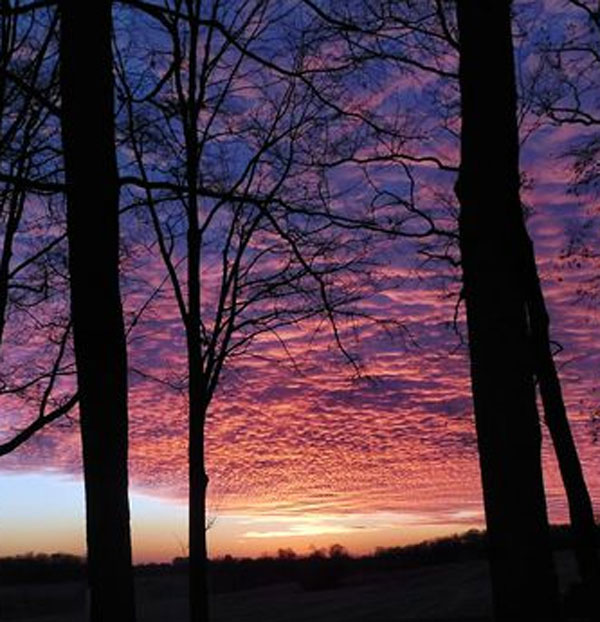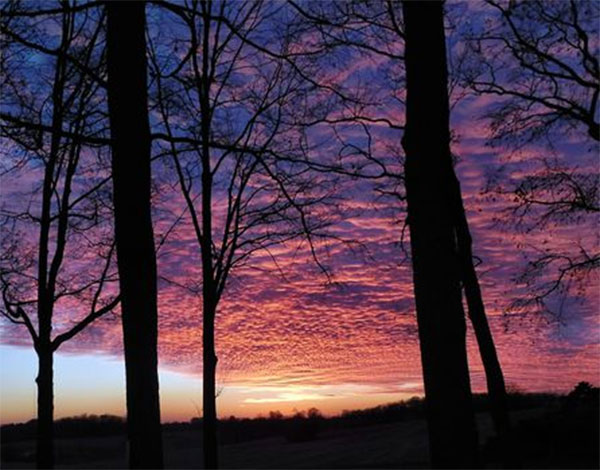Posts for: michaelgem
Apr 13, 2018 19:56:51 #
TriX wrote:
ðð Good answer. I still have my IES handbook - used to be a member, but let it drop when I stopped doing lighting design. Are you still a member?
Thanks for verification and backup from a man who was a member of The Illuminating Engineering Society (IES) indicating creds superior to those of this communications engineer, semi-pro photographer, and gemologist-appraiser. All these fields of endeavor caused me to become very aware and knowledgeable about lighting and its complex interaction with objects in nature, especially the world of gemstones and diamonds.
To elaborate on my last comment: Since your eyes auto white balance to the ambient incident light, the monitor should be adjusted to that ambient color temperature, so that your brain sees colors in the monitor the same as surrounding colors in the room (i.e. correctly).
Say you have photographed a slightly-bluish green emerald from the famous Muzo mine in Columbia. You have the image up in photoshop to fine tune the bluish green hue of the stone. You are in a room with 4100K fluorescent lighting, while your monitor is calibrated for the cooler slightly bluish 6500K of the OP. With eyes adjusted (white-balanced) to the warmer, more yellowish 4100K, the observer may well see the green of the emerald image on the monitor as slightly bluish green matching how the emerald looks in his hand. The image may actually be green or even yellowish-green on a monitor calibrated properly to a neutral 5000-5500K and observed on the monitor by someone in a neutral lighting environment.
I understand this is complex, especially as we see color relative to surrounding colors, and our brain is constantly "auto-white balancing" to the ambient lighting almost instantly as our gaze shifts. This auto white balancing is why we see colors close to correctly in nature despite the lighting going from the yellowish low color temperature in early morning and late afternoon to the high bluish color temperature from the clear blue sky of northern daylight. This property of human visual perception is called "color constancy" and our evolving species would have been confused and in jeopardy without it.

Apr 13, 2018 12:17:33 #
a6k wrote:
My Spyder5Pro and some of the software that's buil... (show quote)
Good question. Totally neutral (no tint to the yellow or blue side) is well known, especially in photography, to be around 5000K to 5500K and often quoted to be 5200K.
Starting with the IES Lighting Handbook, 5th edition, the section “Color Temperature” on p 5-11 states that a blackbody radiator would be “white (neutral) at about 5000°K.” [Kaufman 1972] Also, several fluorescent lamp manufacturers produce full-spectrum white lamps that have CCTs ranging from 5000 to 5500°K. The color differences of these full-spectrum lamps are slight. All CCTs in this range appear to be quite close to neutral white.
However, the CCT of full-spectrum white light can be narrowed from this range. The blackbody temperature that would be closest to full-spectrum white light would be the one having the flattest planckian distribution curve across the visible spectrum, 400 - 700 nm. Figure 4-14 of the IESNA Lighting Handbook, which plots a family of such planckian distribution curves, shows that the flattest curve would be between the 5000 and 6000°K curves. Interpolating between these two curves shows that the flattest curve would be at about 5200°K.
Noon daylight white is typically quoted from 5000 to 5500.
Anywhere from 5000 to 5500 is indistinguishable to an observer and essentially dead neutral, no tint of either blue or yellow.
So the answer to your question: why are monitors set to around 6500 K when daylight is typically around 5500? is that someone decided to set that as their standard. That is in spite of the fact that it is slightly toward the blue side, while the room ambient light is typically on the yellowish side often well below neutral 5000K.
Since your eyes auto white balance to the ambient incident light, the monitor should be adjusted to that ambient color temperature, so that your brain sees colors in the monitor the same as surrounding colors in the room (i.e. correctly).
Jan 9, 2016 07:58:16 #
Re: With Gamma 2.2 it should be 117.
Neat. How do you arrive at that number and what has the Gamma got to do with it?
I've always been currious as to why the camera exposes for 18%. Why not 50%?
Neat. How do you arrive at that number and what has the Gamma got to do with it?
I've always been currious as to why the camera exposes for 18%. Why not 50%?
Jan 4, 2014 11:40:25 #
Maybe the placement of the two trunks is distracting from the main focus of the sunset. What do you think of these two crops?


Sep 24, 2013 10:00:33 #
bigwolf40 wrote:
I tried what Bryan Peterson said in is video which was set it on cloudy and forget it. I wasn't quite sure but I tried it and really like the results. I do most of my shooting out doors....Rich
Using auto WB vs setting on cloudy accomplishes two different goals.
Bryan likes his shots a little warmer. The cloudy setting is a cooler higher color temperature setting than 5000K noon daylight, so shots taken in noon daylight come out warmer looking. Shots in late afternoon or at sunset come out richly warm.
On the other hand, the auto WB setting, if it does its job as intended, will give the same neutral color balance result in noon daylight, cooler cloudy lighting, late afternoon or sunset.
Auto white balance acts like your eyes which adjust your color perception so that white or gray appears white or gray under cool/bluish skys, noon/neutral daylight, or warm/yellowish late afternoon sun.
If your desired result is for the shot in late afternoon to have that golden glow, leaving the setting on cloudy will accomplish that different goal.
Michael
Apr 5, 2013 15:03:30 #
wmvcooper wrote:
Thanks for all of the replays!! I now have a better understanding of the difference between HDR and bracketing.
I'll take a shot at summarizing.
An image captured in RAW that has a histogram completely within range, i.e. no clipping at either end has captured the complete range of lighting in the scene. So bracketing is unnecessary as there are no more light values to capture.
That is why Lighthouse said "If the info is already there in the RAW you do not need HDR to bring it out. You can bring it out by other normal processing means." (The other "normal processing means" are in effect a form of HDR processing on the RAW data so that all the light values lie within the range of the JPG image produced.)
In camera HDR processing on the raw data does just that. It processes/squeezes the greater dynamic range of the raw capture into the narrower dynamic range of the resulting jpg.
When the range of light values in the scene exceeds what the camera can capture in RAW or JPG the histogram will show clipping of light values at one or both ends. This is when exposure bracketing is necessary to capture the whole range of light values in two, three or more images.
HDR software combines in ingenious ways the parts of each of the images that are properly exposed squeezing all the light values of the multiple images to be withing the final limited range of the resulting JPG.
This is similar to the in-camera HDR firmware squeezing the greater range of values in the RAW capture into the narrower range of values in the resulting JPG.
So,
1. Bracketing captures all the light values in the scene when one image, even RAW, cannot.
2. HDR is the software or firmware that combines and optimally translates/squeezes that great range of light values into the limited dynamic range of the resulting JPG image.
Michael
Feb 26, 2013 11:59:21 #
The following review by JR1 inspired me to look for his UK obtained inexpensive flash lighting setup but from vendors to the US market.
Thanks, JR for your welcome heads up on the availability of this inexpensive but quality flash lighting setup.
I found the "bomb" in studio light stands similar to JR's but 10' in height with die cast metal locking collars and gorgeous annodized black metal tubing, 1.36" outside diameter with double leg braces, very stable.
They are two PBL photobright lighting studio 10' light stands obtained through amazon.com from STEVE KAESER PHOTOGRAPHIC LIGHTING & ACC. They came with there own carry bags and heavy duty saddlebag designed sandbags to go over the stand legs to make the stand very stable. All for $62.95, outstanding value for the money.
Product Features
EXTENDS UP TO 10', EXTRA WIDE FOOTPRINT, HOLDS LOADS UP TO 15 lbs
ALL METAL LOCKING COLLARS, SPRING CUSHIONED, SMOOTH AND EASY RAISING AND LOWERING, SPRING LOADED, CLOSES DOWN TO 45"
STANDS WEIGH 4.8 lbs EACH, BLACK NON-GLARE ANODIZED FINISH, ALUMINUM TUBE CONSTRUBTION
NON-SLIP TIPS ON EACH LEG TO PREVENTN MOVEMENT, 5/8" UNIVERSAL LIGHT STAND ADAPTER, WITH 1/4" 20 THEAD ON TOP
SAND BAGS SADDLE BAG DESIGN 10 1/4" X 9 1/4", HEAVY DUTY, FILL WITH SAND,GRAVEL OR EVEN NUTS AND BOLTS
I know I sound like a shill for Kaeser, but that's how pleased I am with JR's advice and Steve Kaeser's PBL light stands.
http://www.amazon.com/dp/B003D8KV0K/ref=pe_175190_21431760_M3T1_ST1_dp_1
http://www.amazon.com/gp/browse.html?ie=UTF8&marketplaceID=ATVPDKIKX0DER&me=A2ZZIT1M65460C
Michael
Thanks, JR for your welcome heads up on the availability of this inexpensive but quality flash lighting setup.
I found the "bomb" in studio light stands similar to JR's but 10' in height with die cast metal locking collars and gorgeous annodized black metal tubing, 1.36" outside diameter with double leg braces, very stable.
They are two PBL photobright lighting studio 10' light stands obtained through amazon.com from STEVE KAESER PHOTOGRAPHIC LIGHTING & ACC. They came with there own carry bags and heavy duty saddlebag designed sandbags to go over the stand legs to make the stand very stable. All for $62.95, outstanding value for the money.
Product Features
EXTENDS UP TO 10', EXTRA WIDE FOOTPRINT, HOLDS LOADS UP TO 15 lbs
ALL METAL LOCKING COLLARS, SPRING CUSHIONED, SMOOTH AND EASY RAISING AND LOWERING, SPRING LOADED, CLOSES DOWN TO 45"
STANDS WEIGH 4.8 lbs EACH, BLACK NON-GLARE ANODIZED FINISH, ALUMINUM TUBE CONSTRUBTION
NON-SLIP TIPS ON EACH LEG TO PREVENTN MOVEMENT, 5/8" UNIVERSAL LIGHT STAND ADAPTER, WITH 1/4" 20 THEAD ON TOP
SAND BAGS SADDLE BAG DESIGN 10 1/4" X 9 1/4", HEAVY DUTY, FILL WITH SAND,GRAVEL OR EVEN NUTS AND BOLTS
I know I sound like a shill for Kaeser, but that's how pleased I am with JR's advice and Steve Kaeser's PBL light stands.
http://www.amazon.com/dp/B003D8KV0K/ref=pe_175190_21431760_M3T1_ST1_dp_1
http://www.amazon.com/gp/browse.html?ie=UTF8&marketplaceID=ATVPDKIKX0DER&me=A2ZZIT1M65460C
Michael
JR1 wrote:
Concluding this review. br br If anyone out there... (show quote)
Jan 27, 2013 12:37:27 #
wlgoode wrote:
Why not? It's about photo equipment.
I am PJ wrote:
Hi JR,
Good stuff but it should be in general chit chat not the main discussion.
Take care dude
Good stuff but it should be in general chit chat not the main discussion.
Take care dude
Why not? It's about photo equipment.
Thanks JR for your valuable contribution to our knowledge of inexpensive lighting and equipment that you use to accomplish the professional quality images shown here and on your website.
You have inspired me to mirror your setup and pursue flash lighting, where I have until now only gotten good using continuous sources, both fluorescent and led.
I'll let you know how I make out.
Michael
Jan 5, 2013 19:34:24 #
Nikonian72 wrote:
P.S. - I use Picasa 3.9 exclusively for my post processing.
P.S. - I use Picasa 3.9 exclusively for my post processing.
Did not know the free Picasa was good for post processing raw files.
How does this capability compare with LightRoom's? Is it more user friendly?
Michael
Dec 15, 2012 23:18:47 #
[quote=Brian in Whitby][URL]http://cerncourier.com/cws/article/cern/46530[\URL]
[URL]http://onlinelibrary.wiley.com/doi/10.1002/adma.201100806/abstract[\URL]
This is not what I was talking about but such a system might meet the needs of the photographer.
[URL]http://ledsmagazine.com/news/9/10/25[\URL]
Here is a photographic product that uses two different colours of LEDs to produce a variable temperature light source.
[URL]http://www.alphatron.tv/2012091755/general-news/ledpro-z6-tunable-bi-color-on-camera-led-light-from-ledpro.html[\URL][/quote]
Thanks for this great information.
From your URL leads we can conclude:
1. Research has resulted in a tunable led. It has yet to reach the market as a viable product, and for whatever reason it appears to still be a laboratory research project stage.
2. Multi-hue led lights consisting of arrays of red, green, and blue fixed color leds are in mass production. I own several and they come with a remote to control the intensity and combined hue output.
3. The tunable-bi-color-on-camera-led-light-from-ledpro that you found is another version of the led array which began this discussion. It varies its intensity by varying the applied voltage, and its color temperature between 3200K and 5600K by varying the combinations of 3200K leds and 5600K leds that are turned on.
[URL]http://onlinelibrary.wiley.com/doi/10.1002/adma.201100806/abstract[\URL]
This is not what I was talking about but such a system might meet the needs of the photographer.
[URL]http://ledsmagazine.com/news/9/10/25[\URL]
Here is a photographic product that uses two different colours of LEDs to produce a variable temperature light source.
[URL]http://www.alphatron.tv/2012091755/general-news/ledpro-z6-tunable-bi-color-on-camera-led-light-from-ledpro.html[\URL][/quote]
Thanks for this great information.
From your URL leads we can conclude:
1. Research has resulted in a tunable led. It has yet to reach the market as a viable product, and for whatever reason it appears to still be a laboratory research project stage.
2. Multi-hue led lights consisting of arrays of red, green, and blue fixed color leds are in mass production. I own several and they come with a remote to control the intensity and combined hue output.
3. The tunable-bi-color-on-camera-led-light-from-ledpro that you found is another version of the led array which began this discussion. It varies its intensity by varying the applied voltage, and its color temperature between 3200K and 5600K by varying the combinations of 3200K leds and 5600K leds that are turned on.
Dec 15, 2012 21:39:41 #
Brian in Whitby wrote:
quote=michaelgem Since a single LED is fixed in c... (show quote)
They are not is common use, and I would appreciate a reference showing they exist, as I am skeptical.
Dec 12, 2012 13:56:14 #
BillHill wrote:
If you check the mfg site, this is exactly what they do.
Bill
Bill
michaelgem wrote:
They have adjustable ones though, don't they..?
A single LED, as I mentioned before, is not adjustable in color temperature.
That is why I said initially:
"Since a single LED is fixed in color temperature, the only way to have adjustable color temp would be to blend 3200K leds with 5600K leds, neat trick if that is what is done. "
A single LED, as I mentioned before, is not adjustable in color temperature.
That is why I said initially:
"Since a single LED is fixed in color temperature, the only way to have adjustable color temp would be to blend 3200K leds with 5600K leds, neat trick if that is what is done. "
Thanks for that heads up. So if you want daylight at 5500K you are only lighting half the leds. I would prefer dedicating all the leds to 5000k to 5500k to get the most light output at daylight color temperature for a given number of leds.
Dec 12, 2012 13:00:39 #
Stef C wrote:
I'm sorry, misunderstood. So they variable ones they have just have a mixture of various lights?
That is what I am assuming, since I don't know of any other way variable color temp could be accomplished, given that a single led can produce only one color temp.
Dec 12, 2012 12:53:23 #
They have adjustable ones though, don't they..?
A single LED, as I mentioned before, is not adjustable in color temperature.
That is why I said initially:
"Since a single LED is fixed in color temperature, the only way to have adjustable color temp would be to blend 3200K leds with 5600K leds, neat trick if that is what is done. "
A single LED, as I mentioned before, is not adjustable in color temperature.
That is why I said initially:
"Since a single LED is fixed in color temperature, the only way to have adjustable color temp would be to blend 3200K leds with 5600K leds, neat trick if that is what is done. "
Dec 12, 2012 12:34:04 #
Adicus wrote:
The advert states that its dimmable so must be adjustable
All leds are adjustable in intensity by varying the voltage applied.
A single led puts out a fixed color temp light, so its color temperature is not adjustable.